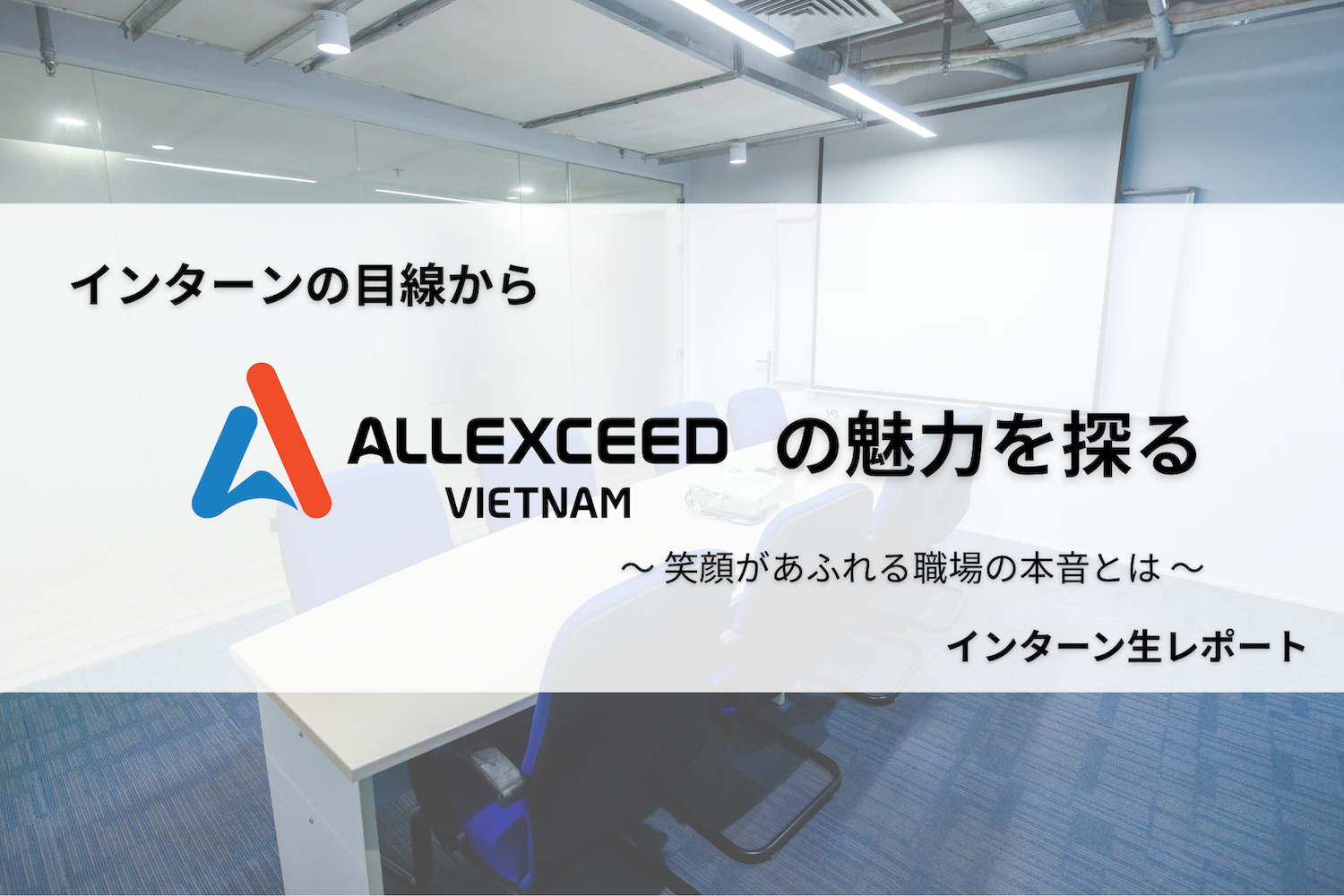2025/08/18
Share
What is Offshore Development? A Complete Guide to the Pros, Cons, and Keys to Success

目次
- What is Offshore Development?
- Key Reasons and Background for Choosing Offshore Development
- The Main Benefits of Offshore Development
- Disadvantages and Risks of Offshore Development
- Keys to Successful Offshore Development
- Common Failures and How to Avoid Them
- Conclusion | “Preparation” is the Key to Leveraging Offshore Development
You want to secure top development talent while keeping costs down. For companies facing this challenge, “offshore development” has become a solution worth considering.
Once considered to have issues with quality and management, offshore development has evolved. With careful partner selection and refined operational structures, it has become a highly viable option in recent years.
This article offers a clear guide for management and decision-makers, covering everything from the fundamentals of offshore development to its advantages, disadvantages, and the keys to making it a success.
What is Offshore Development?
Offshore development refers to the practice of outsourcing a company’s software development tasks to companies or development centers located overseas.
Popular destinations for offshoring include countries like Vietnam, India, and the Philippines, which offer relatively low labor costs and an abundance of skilled IT talent.
Compared to domestic development in Japan, it allows companies to reduce costs and supplement their lack of internal resources, making it a popular option for many businesses.
Key Reasons and Background for Choosing Offshore Development
The widespread adoption of offshore development in recent years can be attributed to the following factors:
A Serious Domestic Engineer Shortage
According to estimates by Japan’s Ministry of Economy, Trade and Industry (METI), the shortage of IT professionals is projected to reach as high as 790,000 by 2030.
For mid-to-large-sized companies undertaking complex development projects, securing the necessary skills and number of engineers within Japan alone is becoming increasingly difficult.
Soaring Development Costs
As labor costs for engineers continue to rise, offshoring has become a realistic choice for maintaining quality while controlling overall development expenses.
Depletion of Domestic Partner Resources
In recent years, it’s not uncommon for companies to approach domestic development firms only to be told, “We don’t have available resources,” or “There’s a three-month waiting list.”
To avoid missing business opportunities due to timing mismatches, a growing number of companies are securing offshore partners as a “second development line.”
The Main Benefits of Offshore Development
Offshore development offers more than just “cost savings.”
Today, an increasing number of companies are strategically using offshoring to keep pace with business speed and technological innovation. Here, we’ll focus on four main benefits.
Cost Reduction
The most straightforward and tangible benefit is the cost advantage.
By outsourcing development to countries with lower prices and labor costs than Japan (such as Vietnam, the Philippines, and India), it’s not uncommon for projects to be completed at about half to one-third of the cost for the same quality.
Furthermore, leveraging external resources on an as-needed basis, rather than increasing in-house staff which adds to fixed costs, provides companies with the significant advantage of maintaining flexibility in their development investments.
Access to a Talented Workforce
When you find yourself thinking, “We don’t have any engineers who understand this technology,” or “Our domestic partners are fully booked,” offshore development becomes a powerful option.
Countries like India and Vietnam have a high standard of education in mathematics and engineering, offering the potential to find talent capable of handling cutting-edge fields such as AI, blockchain, and cloud-native development.
Vietnam, in particular, has a growing number of Japanese language learners, meaning there are many engineers and Bridge System Engineers (BrSEs) who are experienced with “projects for the Japanese market.”
Maintaining a Scalable, Long-Term Development Structure
For product development that requires continuous evolution, not just for specific projects, it is crucial to be able to flexibly adjust the team structure in response to fluctuating resource needs.
Offshore development is an effective means of maintaining a development structure while controlling costs, as it allows for easier team scaling (expansion or reduction) from a long-term perspective.
Focusing and Optimizing In-house Resources
Utilizing offshore teams allows your in-house development members to concentrate on upstream processes such as planning, design, and product management.
By outsourcing labor-intensive tasks like coding and testing, you can achieve the effect of enhancing the overall productivity and expertise of your entire organization.
Disadvantages and Risks of Offshore Development
While offshore development offers many benefits, it also comes with unique risks and challenges that require attention.
Companies new to offshoring often find that “it’s a different ball game compared to domestic development.” Here are three key risks that the client-side should understand beforehand.
Communication Barriers
The most common issue is the communication gap arising from language and cultural differences.
For example, real-world challenges include “thinking the specifications were conveyed, but the intent wasn’t accurately understood,” “reports being too abstract to make decisions on,” or “the priority of instructions not getting through.”
In some cultures, people may say “yes” without fully understanding, or they might implement ambiguous instructions as they are. It’s crucial to design processes with the understanding that the tolerance for ambiguity differs.
To address this, the key is to create systems that prevent miscommunication and assumptions, such as assigning a Bridge SE, designing regular meetings, and establishing a clear review process for deliverables.
Difficulty in Quality Management
With the development team located remotely, real-time progress tracking and code reviews can be more challenging compared to domestic development.
Furthermore, if the team has a misaligned understanding of “what defines quality,” it can lead to situations where significant rework is needed right before release.
To avoid such risks, it is vital to clarify the following at the very beginning of the development phase:
・Sharing of coding conventions and review standards
・Documentation of test specifications and acceptance criteria
・Setting KPIs and quality metrics (e.g., bug counts, review pass rates)
The perspective that “quality is ensured by design, not by instruction” becomes even more critical when utilizing offshore development.
Security and Intellectual Property Risks
Having a development center overseas can naturally lead to concerns about the handling of source code, design information, and personal data.
For industries dealing with highly sensitive information, such as finance, healthcare, and manufacturing, coordinating with internal regulations and legal departments is essential before outsourcing.
Taking the following proactive measures can provide peace of mind:
・Signing and thoroughly reviewing a Non-Disclosure Agreement (NDA)
・Configuring access permissions for servers and code management environments
・Verifying the offshore center’s information security measures (e.g., ISO 27001 certification)
・Confirming the laws and intellectual property protection systems of the partner country
Offshoring doesn’t automatically mean higher risk, but having well-documented “contracts,” “rules,” and “management systems”—often more so than for domestic partners—is a hallmark of a trustworthy partner.
Keys to Successful Offshore Development

The success or failure of an offshore development project depends not only on technical skill but heavily on “preparation” and “operational ingenuity.”
To maximize results with a long-term development partner, rather than just seeking cost savings, it’s essential to design your approach with the following points in mind.
Careful Vendor Selection
The most critical factor in offshore development is “who you partner with.”
Choosing a vendor based solely on reasons like “they are the cheapest” or “they have a large team” often leads to trouble down the road.
A comprehensive evaluation is required from multiple perspectives, such as: Do they have past experience with projects for the Japanese market? Can they provide thoughtful responses that include problem-solving and improvement proposals, beyond just technical execution? Is their project management structure solid?
A “phased adoption” approach, where you conduct a trial project to verify their quality and responsiveness before signing a long-term contract, is also an effective strategy.
Refined Project Management
Precisely because of the physical distance, an approach of “leave it to the local team” or simply “handing it off” will not work.
The client-side is also required to have a proper management structure in place.
Specifically, it’s crucial to carefully organize and share requirements beforehand, and then establish a system for regular progress checks and issue alignment during the development process.
For example, the following structure can be effective:
・Document and share specifications and design policies before development begins
・Hold regular weekly or bi-weekly progress review meetings
・Utilize chat and task management tools to make issues and their statuses “visible”
・Predetermine the rules for reviews and the feedback loop
Adopting a stance of “building a shared understanding before you start,” rather than “adjusting as you go,” will dramatically increase the success rate of your offshore development projects.
Conscious Communication
In offshore development, disputes over “what was said” or misunderstandings from “I thought it was communicated” can easily damage trust. That is why it’s essential to design communication that is conscious of the “human-to-human” relationship, going beyond simple information exchange.
Key points to focus on include:
・Holding regular face-to-face meetings instead of relying solely on email and chat
・Focusing on two-way dialogue that encourages the partner’s understanding and proposals, rather than one-way instructions
・Engaging in small talk and casual conversation to deepen understanding of cultural and value differences
・Expressing gratitude and appreciation to foster psychological safety
The accumulation of these “small considerations” builds a sense of “team unity” that technology and formal structures alone cannot provide.
This is a critical point that can lead to significant differences in the final outcome, especially for long-term projects and continuous collaborations.
Common Failures and How to Avoid Them
Offshore development holds great potential, but starting casually with the mindset of “I can get it done cheaply” can often end up costing you more.
Here, we introduce common failure patterns seen in the field and concrete measures to avoid them.
Misaligned Expectations
The most typical failure is a gap in perception, such as “they’ll get it done if I just hand it off,” or “they should be able to understand my intent.”
This happens when “implicit assumptions” or things considered “common sense” that are not written in the specifications are not shared.
For example, simply telling them it’s an “urgent task” doesn’t guarantee that they will be able to judge what to prioritize and what can be postponed.
To prevent such gaps, it is crucial to be thorough about the following before development:
・Communicate the requirements, background, and objectives as a set
・Avoid ambiguous phrases like “if possible” or “make it look good”
・Share examples of the expected output or screen mockups
A shared understanding doesn’t happen on its own. It’s something you must carefully “build.”
Projects Going Astray Due to Lack of Management
No progress reports, schedules slipping without anyone noticing, no one knowing who is doing what—when a project falls into this state, it tends to go astray.
Unlike domestic development, the physical and psychological distance in offshoring makes it harder to see “how far along we are.”
To prevent this failure, it is effective to clearly appoint a manager and establish rules for “reporting, contacting, and consulting” as a system.
Specifically:
・Clarify the person in charge and the decision-making flow for each phase
・Introduce tools that can centralize the management of tasks, progress, and issues (e.g., Backlog, Jira, ClickUp)
・In addition to weekly meetings, use communication tools like Slack to make minor progress sharing a habit
Regardless of the project’s scale, instilling a style of “share small, share fast” can prevent problems before they arise.
Unclear Evaluation Criteria
If the evaluation of deliverables is ambiguous, it leads to a buildup of frustration, with thoughts like “this isn’t what I expected” or “they’re working hard, but I’m not satisfied.”
If this continues, distrust will grow on both sides, making it difficult to build a good relationship. The reason evaluation criteria tend to be unclear is that “what constitutes success” has not been verbalized or quantified.
Therefore, it is effective to share the following at the start of the project:
・Quantitative goals for quality (e.g., number of bugs, test pass rate)
・Evaluation criteria for deadlines and deliverable reviews
・Expectations for the frequency and speed of issue resolution and improvement proposals
Additionally, by not only using a “demerit-based” evaluation but also verbalizing what was done well and where工夫 (creative effort) was shown, the quality of the relationship will improve.
Offshore development is not simply about outsourcing costs.
Nurturing a trustworthy team, managing risks, and continuously delivering results—the design and engagement to achieve these are what separate success from failure.
Conclusion | “Preparation” is the Key to Leveraging Offshore Development
Offshore development is not just a solution for immediate challenges like cost reduction and talent acquisition; it is also an effective means of strengthening your product development structure for the medium to long term and optimizing internal resources.
However, it is also a fact that because of differences in distance, culture, and language, the outcome can vary greatly depending on “how you delegate” and “how you engage.”
For success, both “preparation before you start” and “ingenuity as you go” are indispensable. This includes:
・Careful judgment in partner selection
・Thorough alignment of requirements and expectations
・Continuous communication and trust-building
・Clarification of management structures, evaluation criteria, and contracts
Instead of shying away because “it’s overseas and difficult,” if you can design “how to communicate” and “how to leverage them,” offshore development can become a reliable partner that complements and strengthens your domestic development capabilities.
With the right understanding and proper preparation, offshoring can become a “weapon” that supports your company’s growth. We hope you will positively consider its potential.
Related column
Related column
OFFSHORE
Offshore Development Services by
ALLEXCEED VIETNAM
ALLEXCEED VIETNAM is a Japan-invested IT solutions company with over 20 years of development experience in Vietnam, specializing in software and system development services.
We offer high-quality offshore development services through our "Offshore Development 2.0" model—an enhanced approach built upon traditional offshore development methods.






